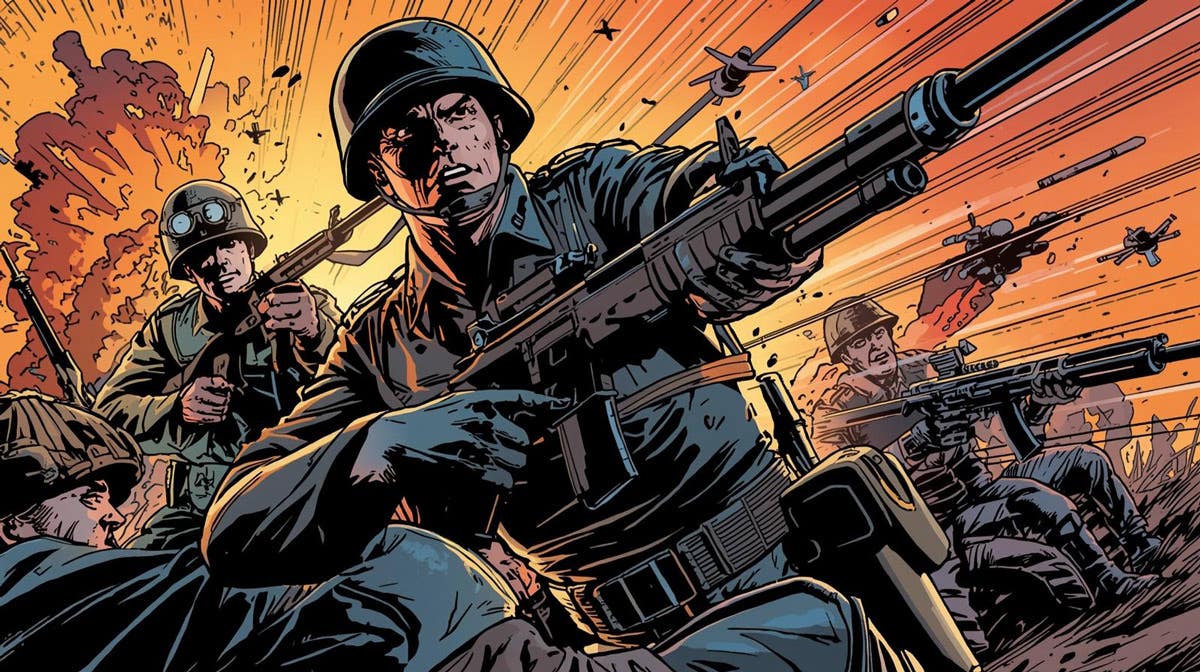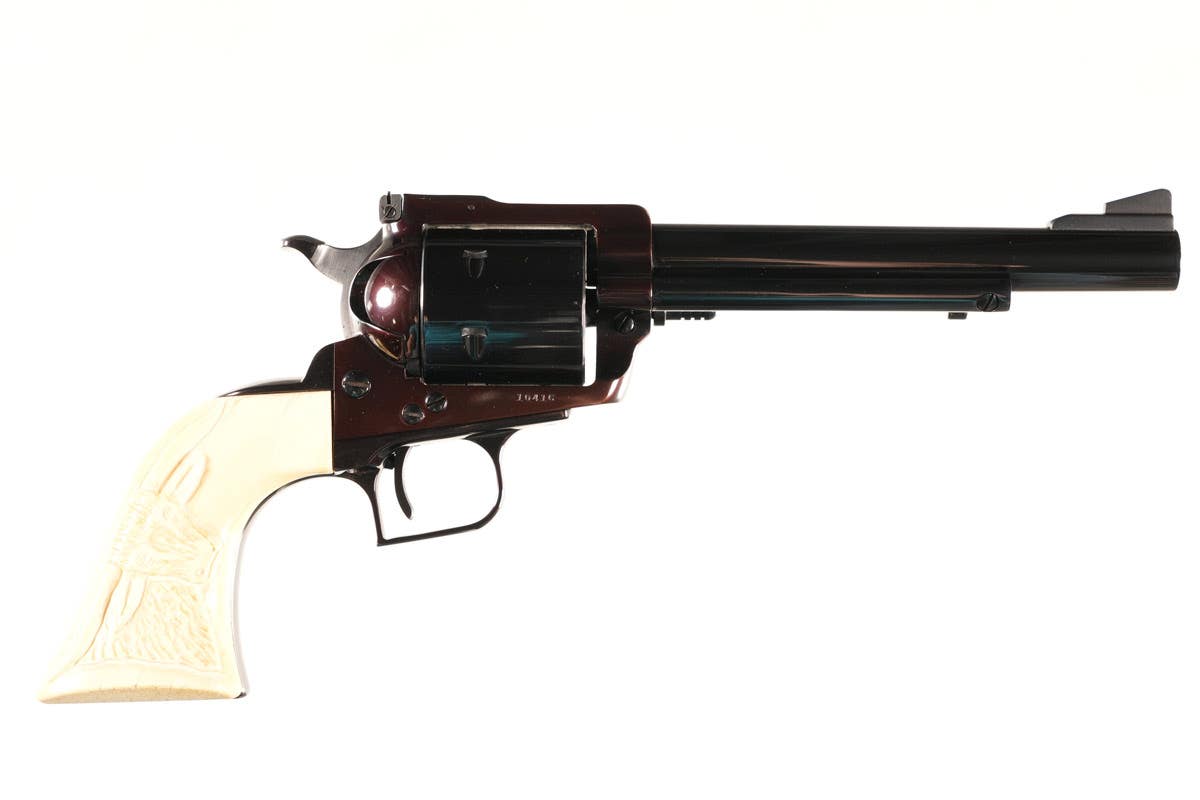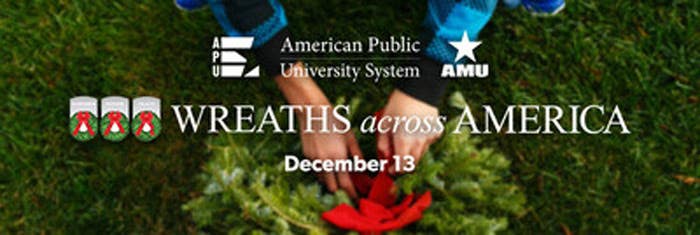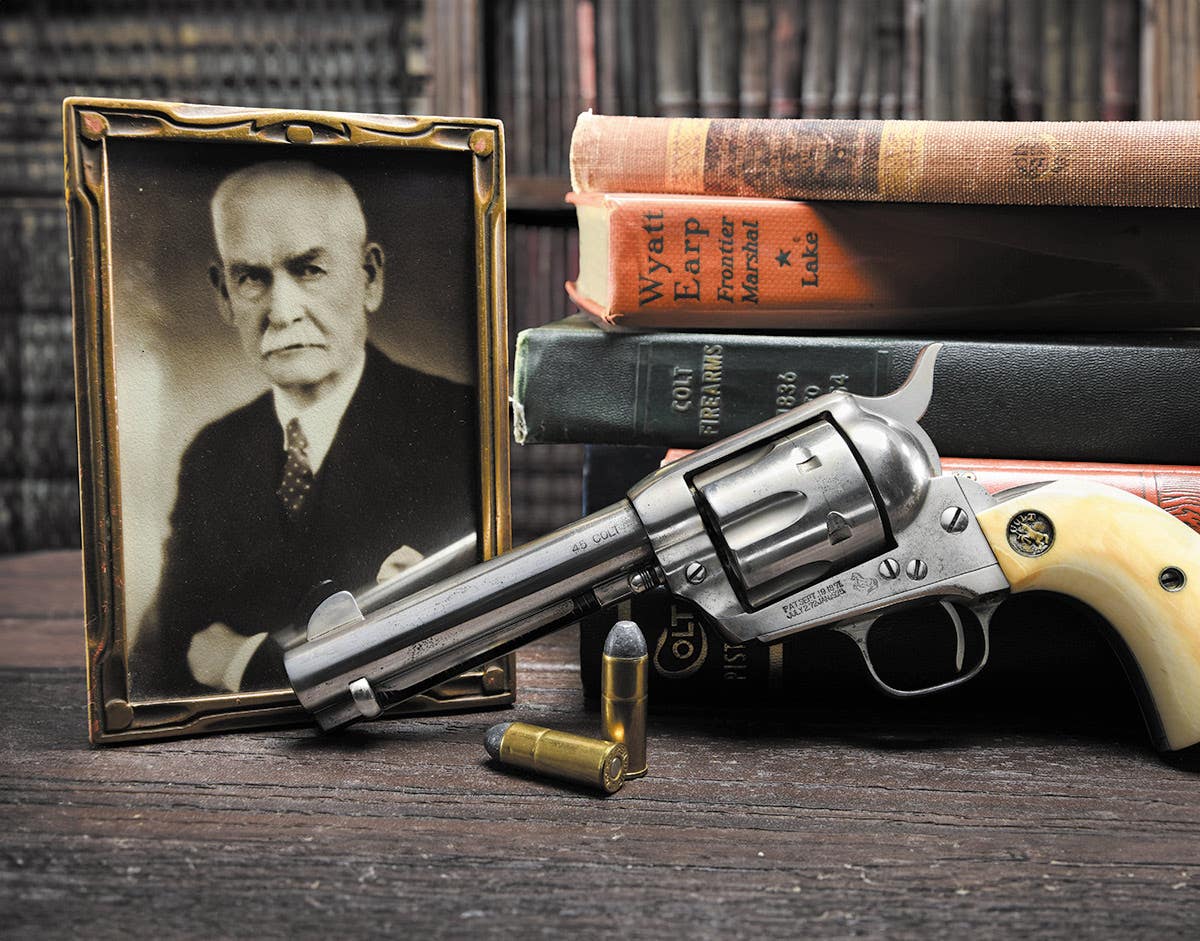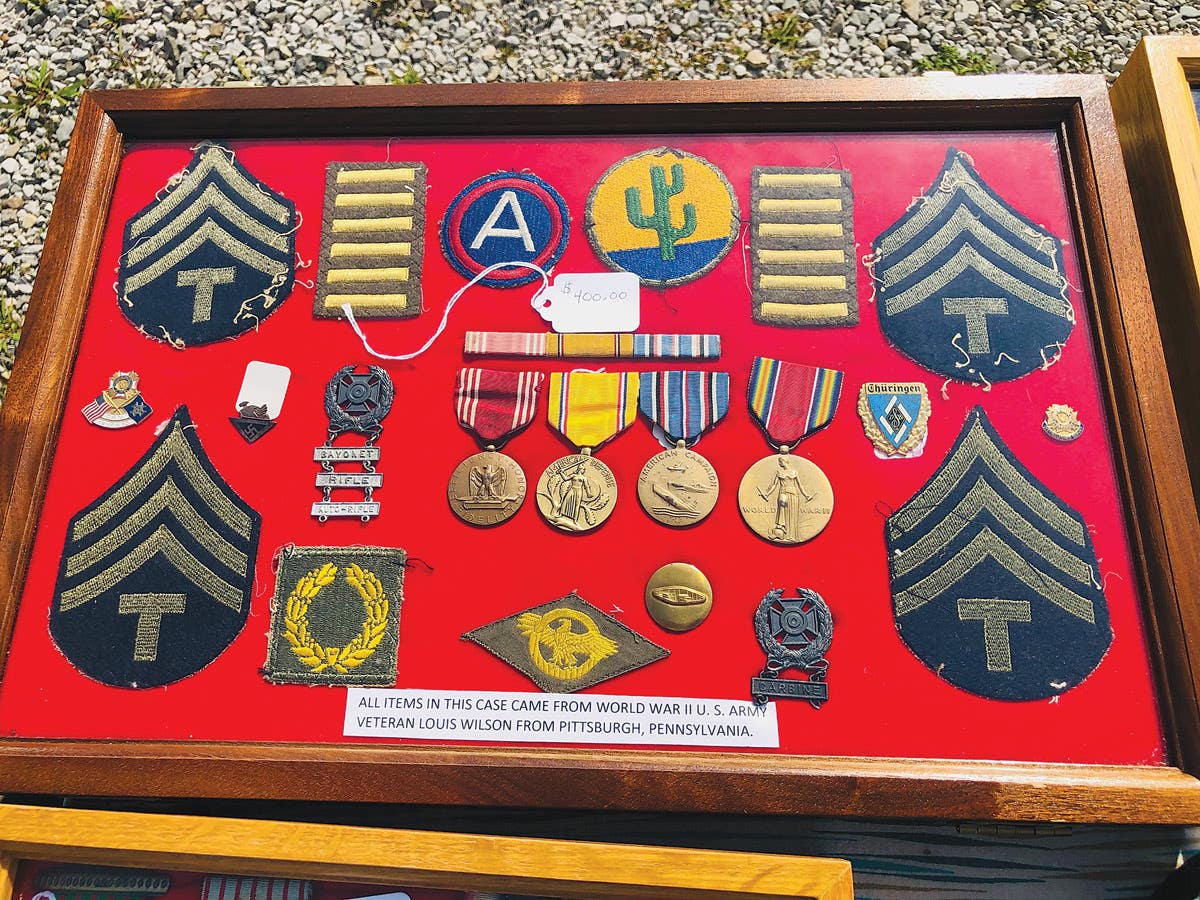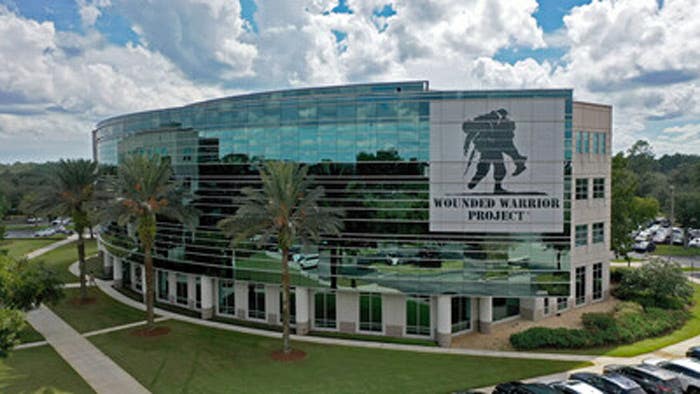Militaria Mindset: Meet Alec Tulkoff
Collector is author of three well-received militaria reference books
Alec Tulkoff is the author of three well-received militaria reference books: Grunt Gear: USMC Combat Infantry Equipment of WWII; Equipping the Corps, Volume I: Webgear, Weapons and Headgear; and Counterfeiting the Holocaust: A Historical and Archival Examination of Holocaust Artifacts. Many collectors dream of writing a book about their particular niche in the collecting endeavor, but relatively few ever do. Advanced or fledgling, it seems all WWII collectors have a family connection.
Tulkoff had numerous relatives placed far and wide in all three American theaters of WWII: Europe (802nd TDB), Italy (34th ID), Navy pilot (Pacific), Coast Guard Philadelphia Naval Yard, Merchant Marines (KIA on a run to Murmansk), Liberty Ship South Pacific, and Seabees on Saipan. “My great uncle – the Seabee, and supposed non-combatant – was the only one wounded during the war,” said Tulkoff. “He was the only one who brought back any souvenirs.”
A chunk of the meatball from a Japanese “Betty” bomber wing, as well as several internal pieces form the cockpit, launched young Alec into a lifelong pursuit. “My uncle was quite the collector as well,” he said, “when I turned thirteen he gave me a framed set of 1866/69 Navy insignia. He had gone the extra mile and contacted the curator at the Naval Academy, who provided research information . . . I guess that really got me going on collecting and researching.”
At the time Tulkoff began collecting, the mail-order catalog played a pivotal role in building collections, and momentum. “I remember at about nine years old my brother was ordering something from the Johnson Smith Catalog,” he said. “I looked through the catalogue too – I ordered a collection of 10 US patches for $5.99 and in that grouping came the 31st ID, 44th ID and a single 1970s Sergeant chevron.”
Militaria collecting has come a long way since the mail order catalog was a mainstay. Although online auctions like eBay and Manion’s have transformed the hobby, Tulkoff prefers more of a hands- on approach. “I personally enjoy finding something without the bidding wars or retail price attached,” he said. “I find the simple and small item can bring a lot more satisfaction than a$1,000 piece. I just picked up a USMC photograph for $20 at the San Jose Militaria Show. The picture shows four Marines, in early blue pullover shirts, with first names and PI location.” He was able to make out the battalion number and company letter on the hats in the photo, and noticed they had belt loops on their khaki trousers, so he knew it was 1904 or later. “It was easy to look on Ancestry at that point in time and find more about their service,” said Tulkoff. “This $20 brought me a few worthwhile and fun hours of gratifying research.”
Several years ago a trip to the famed Rose Bowl Flea Market yielded quite a find. “On top of a heap of used clothing was a perfectly laid out M42 jacket, well-worn with a lot of washings in its day,” Tulkoff said. “My girlfriend was giving me grief over even looking at such a ratty item, but I had a good feeling about it and was certain it was worth the $8.50 the vendor was asking.” It turned out to be a rigger modified jacket with an outline of a prior 101st insignia. He decided to sell it on eBay, as his collecting focus was Marine Corps exclusive, and it brought thousands of dollars. “I bought a gun safe, due to the new gun laws in CA requiring a gun safe at home,” he said, “and flew to New Orleans for a long weekend – without my girlfriend.”
Tulkoff’s most memorable collecting accomplishments aren’t from what he has bought or sold – it is has been from what he has been able to do for other collectors. “I constantly get emails and calls from fellow collectors who tell me stories of being able to purchase something because they knew what it was due to my books,” he said. “I get more sense of accomplishment from that then finding something to add to my personal collection.”
He encourages new collectors to specialize. “You will never own everything so if you set your sites on a topic, be it a time period, battle, or piece of equipment, collecting becomes more attainable,” he said. “When I was researching my first book, Grunt Gear, I went to a collector’s home and found the most amazing collection of Marine Corps headgear. At that time, I had one Korean War era dress cover so I felt like I had nothing compared to this person and would never be able to rival their collection. Flash forward eight years and I have almost a complete set of Marine Corps EM headgear including an 1898 dated cap.” He advises collectors not to be discouraged by the magnitude of another’s collection: “Time, patience and networking do pay off when it comes to collecting,” he said.
Another piece of advice: do your homework and invest in reference books. “I know most collectors would prefer to spend $80 on another item to add to their collection, but spending that $80 on a book can save hundreds – even thousands – of dollars,” Tulkoff said. “I just picked up Robert Capsitrano’s self-published set of WWII US Army DI books . . . my collector’s library is something I use all the time: From answering questions to help date photographs or use for citations in my writing.” He also suggests utilizing the many online collector forums. “The collective knowledge of many far exceeds that of one,” he said.
As for experienced collectors: pay it forward. “I have been the recipient, as well as the benefactor, in regards to this,” he said. “Pass along items from your collection to a newer, and hopefully younger, collector as a gift or at least as something they are able to afford. I just sent a droop wing EGA and a WWI USMC dog tag to a newer collector, gratis. He is overseas serving our country...kind of my way of saying ‘thank you’.”
“If I paid $5 for an EGA ten years ago, is selling it for $25 today going to make me rich?” Tulkoff asked. “I prefer to eat the $5 and help jump start a new collector. In the long run, this newer collector might find something I need or could have gained knowledge about something that could benefit my collection. Once again, networking is a great resource often underutilized.”
Tulkoff also believes collectors old and new will benefit from a trip to their local archives. “It can be NARA or even a local large University – there is so much information available,” he said. “Manufacturing records for the US Arsenal system are even available online in the Annual Reports of the Secretary of War from the early part of the 1900s. This means you can put a total quantity made of the holster, cartridge pouch or box or even saddle in your collection.” He said the Secretary of War and Secretary of the Navy reports are all part of the larger US Government Serial Set. “Ask a librarian and they will let you know if they have it; knowing you own 1 of only 50 made that year is certainly a thrill.”
Tulkoff laments the number of fakes, forgeries, and fantasies on the market today. “Money drives the hobby world now so buyer beware,” he said. “Although fake items have been around for ages, it is now an industry to make so called reproductions – but they are not marked as such.” He said these reproductions can easily be aged or added to an existing original uniform. “The manufacturers of these items claim reenactors want them unmarked as reproductions, but being marked on the back does not lessen the reenacting value,” said Tulkoff. “It is the manufacturers who purposely omit these markings because they know people are aging them and selling them as original. These people are complicit in the fraud taking place on a daily basis on auction sites and at military shows. This is the reason I started writing books.”
Tulkoff released Counterfeiting the Holocaust (Schiffer) in 2000 – the only work of its kind. “eBay was, and still is, filled with fake Holocaust related items,” he said. “I was able to help shutdown a well-known mail order catalog company due to their massive amount of fraudulent items sold; I provided a list of 165 items to the Attorney General’s Office and they were forced to shut down and pay $5,000 into a consumer fraud fund.”
Tulkoff enjoyed the research so much he decided to write additional reference books, this time on Marine Corps uniforms and equipment: Grunt Gear (Bender) was published in 2003 and Equipping the Corps Volume 1, 1892-1937 (Bender) was recently released in 2010.
With the 100 year anniversary of the start of WWI, Tulkoff surmises uniforms and equipment of this era will increase in popularity. “You can still purchase a good patched uniform for $180,” he said. “They seem to be readily available from many sources.”
He said he has noticed an increase in the popularity of USMC EGA devices. “The prices that some of these EGAs command at auction have been astounding,” he said. “Even generic 1937 pattern EGAs can go for crazy amounts due to bidding wars. The early officer’s jeweler made EGAs go for thousands on a regular basis, but there are really no recent reference books; however, Dr. Fred Briuer is working on a multi-volume set due out early next year. I am sure when the information in that book hits, the prices will continue to grow.”
Tulkoff is currently working on Volume II of Equipping the Corps, to cover USMC uniforms and equipment from 1892 to 1937. He is soliciting fellow collectors for early images of Marines in uniform to include in the book. “I am lacking photographs from the 1898 to 1910 time period,” he said. “This volume will extensively cover dress and field uniforms.” To contact Tulkoff with images for potential publication, or for assistance identifying unique and unusual USMC related items, email: atulkoff@gmail.com.
YOU MAY ALSO BE INTERESTED IN:
*Military Vehicles Magazine
*Standard Catalog of U.S. Military Vehicles, 1942-2003
MORE RESOURCES FOR COLLECTORS
*Great Books, CDs & More
*Sign up for your FREE email newsletter
*Share your opinions in the Military Forum



